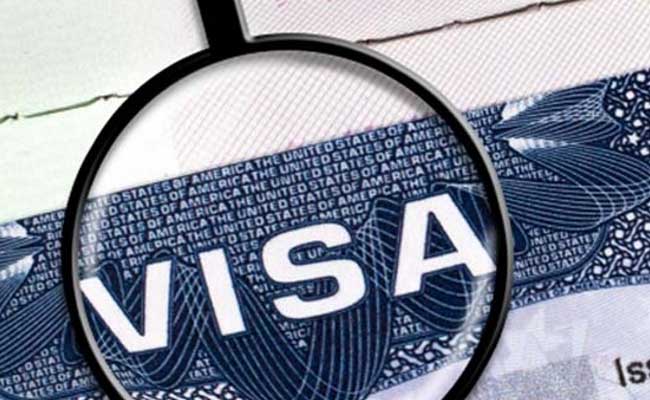Big Move By Biden Administration To Benefit Indians Seeking Long-Term Visa
The move is seen as an important step in addressing the issues of aged-out children who came to US legally with their parents.
The Biden administration has announced a policy manual update for the purpose of calculating a non-citizen’s age in certain situations under the Child Status Protection Act (CSPA), a move seen as a small but important step in addressing the issues of the aged-out children, a large number of whom are Indians, who came to the US legally with their parents.
For a child to obtain lawful permanent resident status in the United States based on their parent’s approved petition for a family-sponsored or employment-based visa, the child generally must be under the age of 21. If the child turns 21 and “ages out” during the immigration process, the child generally is no longer eligible to immigrate with the parent based on the parent’s petition.
“The US Citizenship and Immigration Services (USCIS) has officially made one of our long-requested policy changes. The USCIS will use the dates for the filing chart to determine CSPA age and any previously denied petition can be reopened,” said Dip Patel, from the improvethedream.org, which has been leading such an effort on behalf of aged-out children numbering over 200,000.
Under this new guidance, the USCIS will now use the Dates for Filing chart to calculate these non-citizens’ ages for CSPA purposes, which provides these non-citizens with more certainty about their eligibility to adjust their status, the federal agency said.
Congress enacted the CSPA to protect certain noncitizen children from losing eligibility to obtain lawful permanent resident status based on an approved visa petition by providing a method to calculate the child’s age that considers when an immigrant visa number “becomes available.”
The Department of State’s Visa Bulletin is used to determine when a visa number becomes available. The Visa Bulletin has two charts — the Dates for Filing chart and the Final Action Date chart. Under the previous CSPA guidance, USCIS considered a visa available for purposes of the CSPA age calculation based only on the Final Action Date chart, even if a noncitizen could apply for adjustment of status using the earlier date in the “Dates for Filing” chart.
This USCIS policy change is effective immediately and applies to pending applications. Therefore, some noncitizens with a pending application may now have a CSPA age that is under 21 based on this change. For example, between October and December 2020, certain noncitizens were permitted to file their adjustment of status applications under the Dates for Filing chart of the Visa Bulletin. However, the Final Action Date chart never advanced sufficiently for their applications to be approved. These noncitizens filed their adjustment of status applications with the requisite fee without knowing whether the CSPA would benefit them.
This USCIS policy change is effective immediately and applies to pending applications. Therefore, some non-citizens with a pending application may now have a CSPA age that is under 21 based on this change.
For example, between October and December 2020, certain noncitizens were permitted to file their adjustment of status applications under the Dates for Filing chart of the Visa Bulletin. However, the Final Action Date chart never advanced sufficiently for their applications to be approved. These non-citizens filed their adjustment of status applications with the requisite fee without knowing whether the CSPA would benefit them.
If these noncitizens are eligible to adjust their status because of the change in policy and they have filed for adjustment of status, they will also be eligible to apply for employment and travel authorisation based on their pending adjustment of status application, and they generally will not lose previously issued employment or travel authorisation, it said.
The USCIS said this Policy Manual update will not prevent all children from ageing out before an immigrant visa is available to them, nor will it prevent children from losing nonimmigrant status derived from their parents upon reaching the actual age of 21.
“The USCIS continues to explore all options available under the law to aid this population,” the federal agency said.
Mr Patel said this is one of the few administrative changes that were easy for the administration to make, but it has obviously taken a long time pushing for it to get to this, so very glad to see it.
“This is considered a policy manual change to interpret how the CSPA age is calculated,” he said.
“My guess is at least a few thousand kids will benefit from those who have already aged out. But likely another several thousand will be protected for future years, especially because of the “retrogression” swings in the visa bulletins in past years,” Mr Patel said.
US Congresswoman Deborah Ross applauded USCIS for taking action to protect some of the 200,000 Documented Dreamers who call the United States home.
“This is an important step forward that will protect many individuals who contribute to our country and economy every single day, but we cannot stop here. We must pass my bipartisan America’s CHILDREN Act to provide a pathway to citizenship for these inspiring young people and finally give them the certainty they deserve. I will not stop fighting for a solution,” Ross said.
In the 117th Congress, Ross led her House and Senate colleagues in efforts to protect Documented Dreamers. She introduced the bipartisan, bicameral America’s CHILDREN Act to provide a path to permanent residency to Documented Dreamers. Her amendment to prevent Documented Dreamers from ageing out of the system passed the House of Representatives as part of the National Defense Authorization Act in July 2022.
Notably, the President’s Advisory Commission on AAPIs (PAC-AAPI) in its previous meetings had made such recommendations as well. Among its recommendations, the commission had said that the USCIS should allow aged-out children to retain their parents’ Green Card application priority date and permit aged-out children to file for their Green Card application using the parents’ priority date of the visa petition filed by their parent’s employers.
A Green Card, known officially as a Permanent Resident Card, is a document issued to immigrants to the US as evidence that the bearer has been granted the privilege of residing permanently.
The commission has recommended that the USCIS should amend its policy manual to calculate the Child Status Protection Act (CSPA) application date of dependents based on the filing date of the underlying visa application.
There are more than 200,000 “Documented Dreamers” in the United States, predominantly from India, although they can come from any country in the world. These young people are those who have or will age out of temporary status that is derived from being dependent on their parent’s; temporary, employment-based non-immigrant visas.
Because most non-citizens who come to the United States on temporary work visas do not have a clear path toward permanent legal status, if their dependent minor children come with them, those children face a dilemma. After turning 21 years old, they will “age out” of their temporary legal status derived through their parents’ visas. At that point, they should leave the United States or face potential deportation, unless they can obtain a different temporary or permanent status themselves.
Because they maintain lawful status until they turn 21, Documented Dreamers are ineligible for the temporary deportation protections and work authorisation provided under the Deferred Action for Childhood Arrivals (DACA) program, which requires a recipient to have “no lawful status on June 15, 2012.”
As per the official record, in April 2020, there were an estimated 253,293 children waiting to obtain permanent residency based on their parents’ employment-based immigrant visa petitions and at risk of ageing out.
Without a legal status to remain in the United States, children who age out must attempt to transition to a new temporary status (such as a student visa classification), self-deport, or become undocumented and risk being subjected to enforcement action.
Those who manage to obtain temporary status often find themselves without any path to permanent status unless they can graduate college, qualify for temporary employment (such as being sponsored for an H-1B visa) and then be sponsored for an immigrant visa and re-enter the Green Card queue from the back of the line.
The H-1B visa is a non-immigrant visa that allows US companies to employ foreign workers in speciality occupations that require theoretical or technical expertise. Technology companies depend on it to hire tens of thousands of employees each year from countries like India and China.



